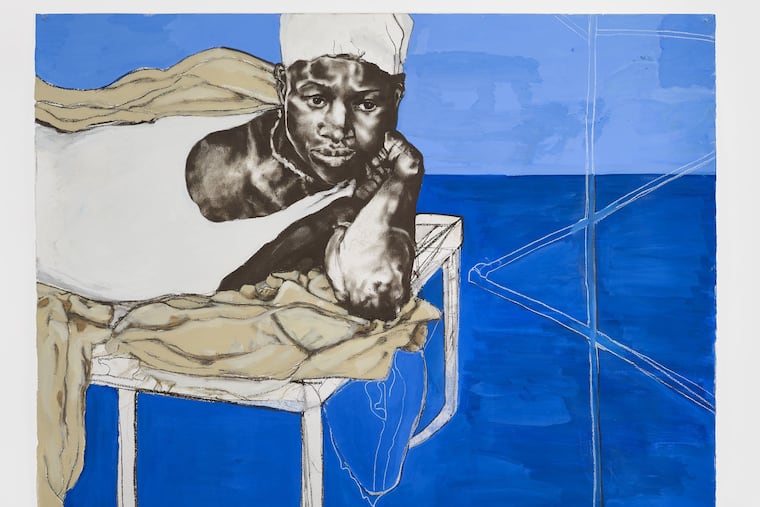A new PMA exhibit celebrates Blackness with all 21st century works
The American debut of 'The Time Is Always Now' is well-suited to Philadelphia, a city with strong artistic Black heritage and Black population of about 39%.

“The Time Is Always Now,” a rich collection of figurative artworks exploring Black contemporary life, will make its American debut at the Philadelphia Museum of Art this fall.
Borrowing its title from an essay by American writer and activist James Baldwin, the exhibition comes to the U.S. following its successful debut at London’s National Portrait Gallery.
The PMA exhibition, which will run from Nov. 9 through Feb. 9, 2025, features more than 60 contemporary works by 28 Black and African diasporic artists. The PMA show will also include additional artists working in Philadelphia, New Jersey, New York, and London.
“The Time Is Always Now,” as a collection of works about the Black figure by Black artists, is notable for its scope and artistic content alone. But this exhibition has a special immediacy.
Its creator, Ekow Eshun, a noted Ghana-born and U.K.-based writer and curator, said these works, though very different, were selected because they all represent various aspects of what he sees as a particular shift in contemporary Black figurative art by Black artists.
“I was interested in what artists are doing and thinking about right now,” Eshun said. “I would say the signal shift that the exhibition explores and represents is a shift in gaze away from art that looks at the Black figure with an othering or sometimes objectifying gaze, to an art that invites viewers to look with and through and from the perspective of those artists and their subjects.”
And when Eshun says right now, he means it. The curator chose all 21st century works for this exhibition.
The exhibition is organized around three themes.
“Double Consciousness” explores Blackness as a psychological, rather than simply physical, state.
“The Persistence of History” explores the absence, presence, or even misrepresentation of Black figures in mainstream narratives and artists’ responses.
“Our Aliveness,” he said, “is an assertion of Blackness as a way of being, as a way of possibility, a way of kinship, a way of sharing resistance.”
The American debut of “The Time Is Always Now” is well-suited to Philadelphia, a city with strong artistic Black heritage and a Black population of about 39%. It’s also a major event for the city’s biggest museum, according to the show’s Philadelphia curator, Erica F. Battle, the PMA’s John Alchin and Hal Marryatt Curator of Contemporary Art.
The exhibition was the first to be commissioned by PMA director Sasha Suda after she came to the museum in 2022.
“Visitors from Philadelphia and all over will encounter a new energy at PMA in this expanded version of the exhibition,” according to a statement from the local curator. “We are excited to see what kinds of conversations their work will inspire.”
The museum has planned a number of public and family programs connected to the exhibition. They include a panel discussion with Eshun, a series of films on Black identity, a live performance by the London-based poet, artist, and filmmaker Julianknxx, as well as a number of children’s activities.
Eshun has his own hopes for “The Time Is Always Now” when it comes to Philadelphia.
“I would like the exhibition to extend an invitation to visitors to come to PMA to see the imaginative range, the range of depth, the ambition, the visual poetry that these artists apply to the experience of Black life and Black being,” he said.
But Eshun added, “when we talk about that, this is not to the exclusion of anyone that’s not Black.”
Such is the far-reaching humanity of this collection of artists and their work.
“The goal of the exhibition is to open up ways of seeing, to encourage loops of exploration, to encounter the richness and depth of this work,” the curator said. “You know, I worked on the show for five years. There wasn’t a single day I wasn’t thrilled to be looking at this work. I want to share that experience with as many people as possible.”